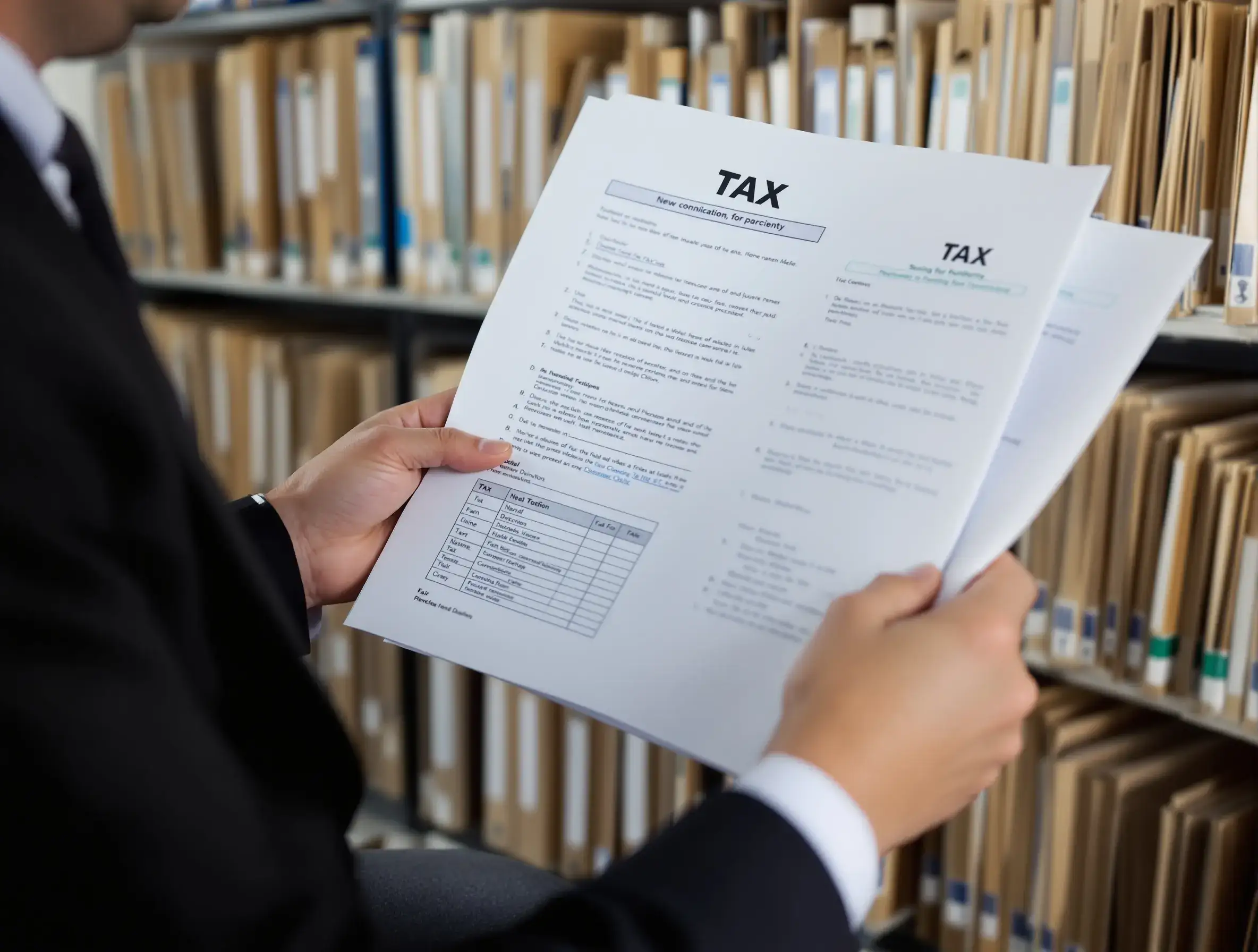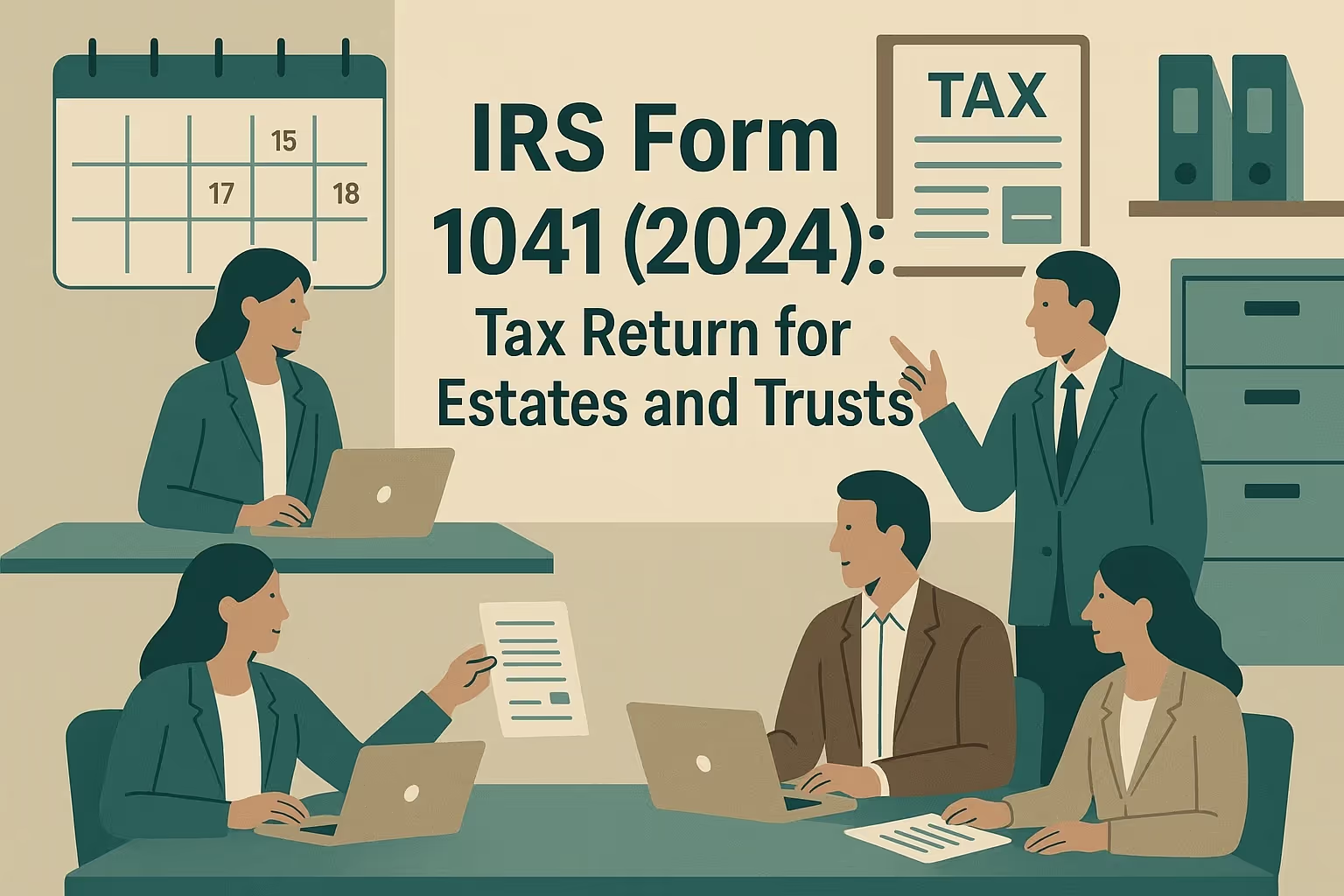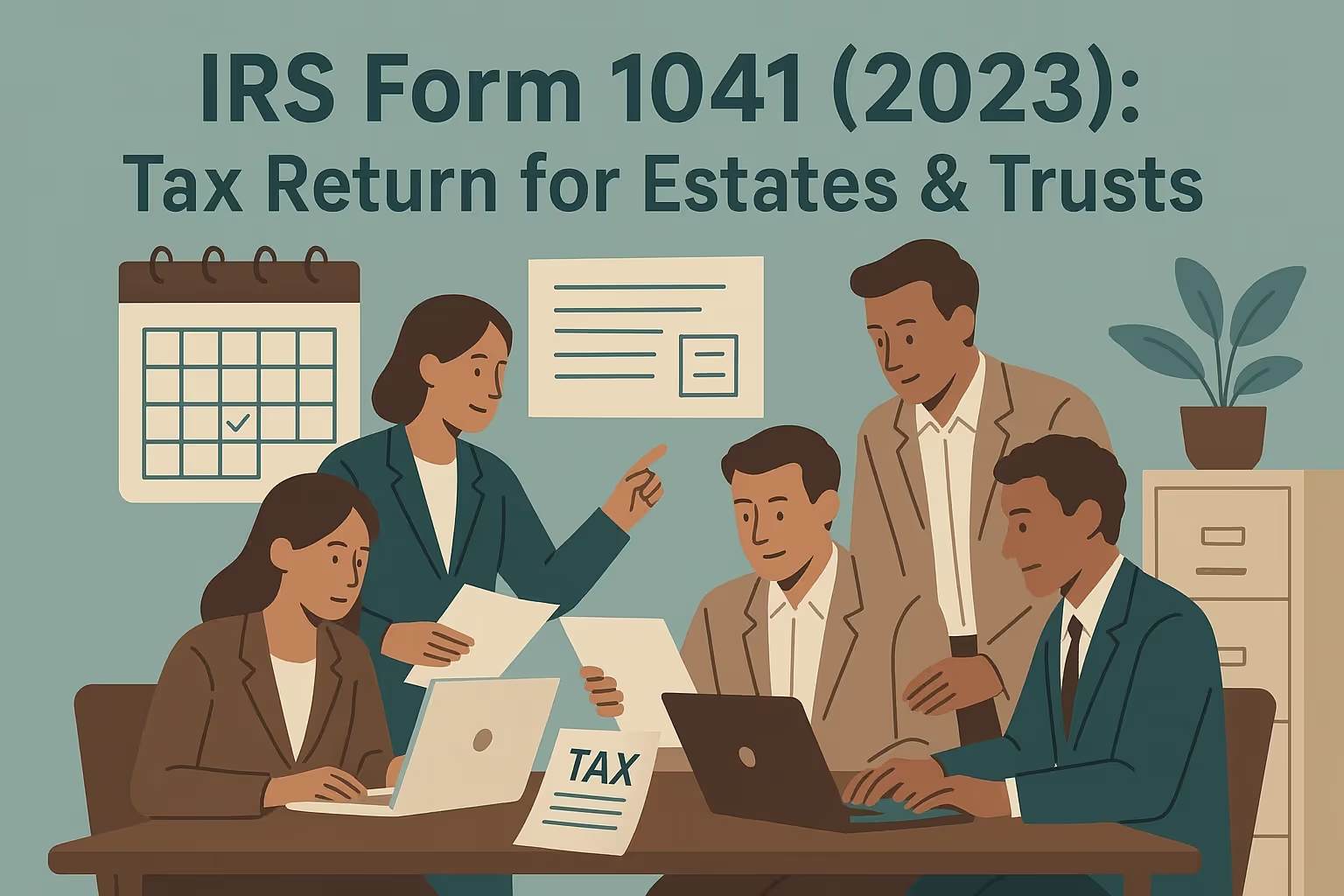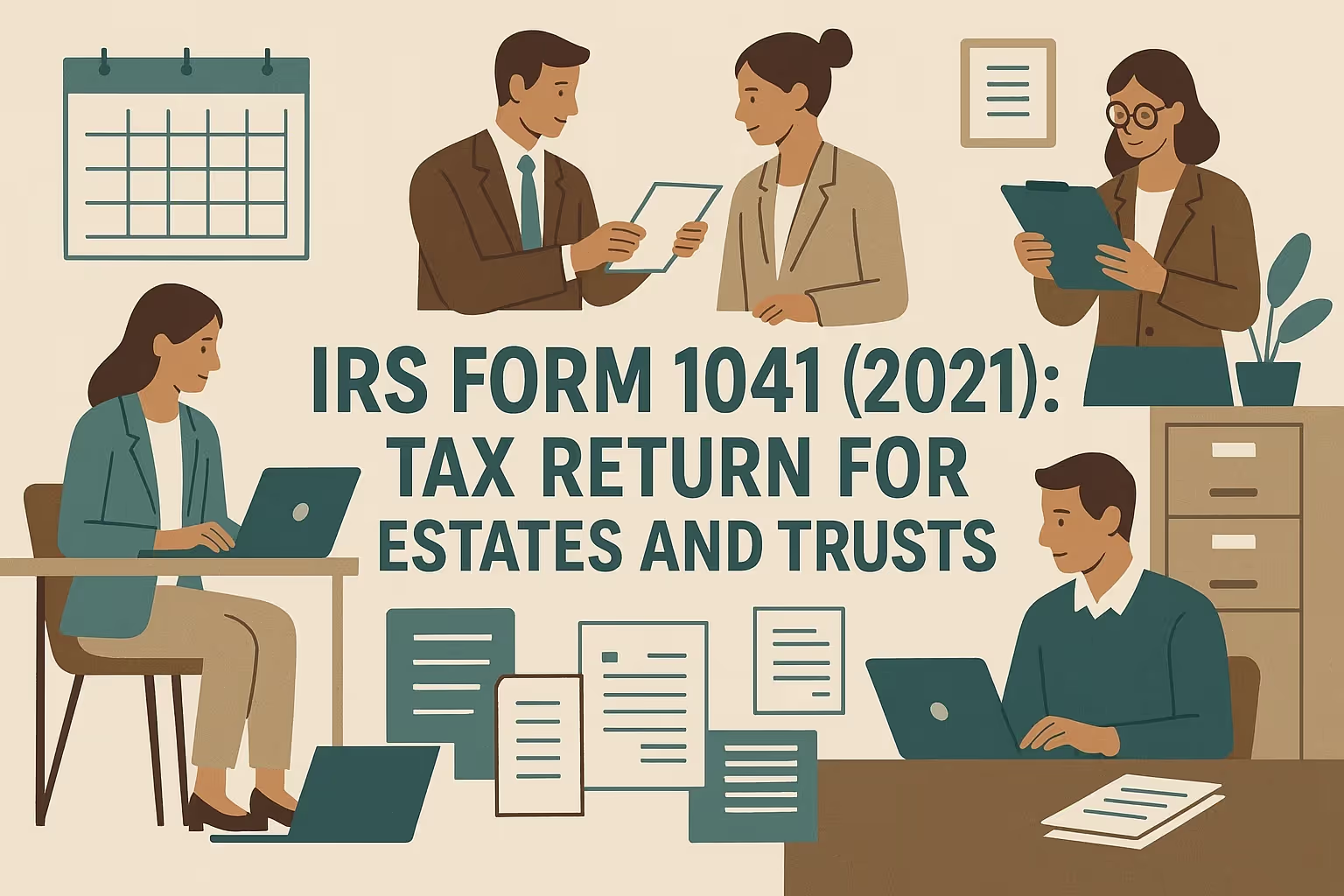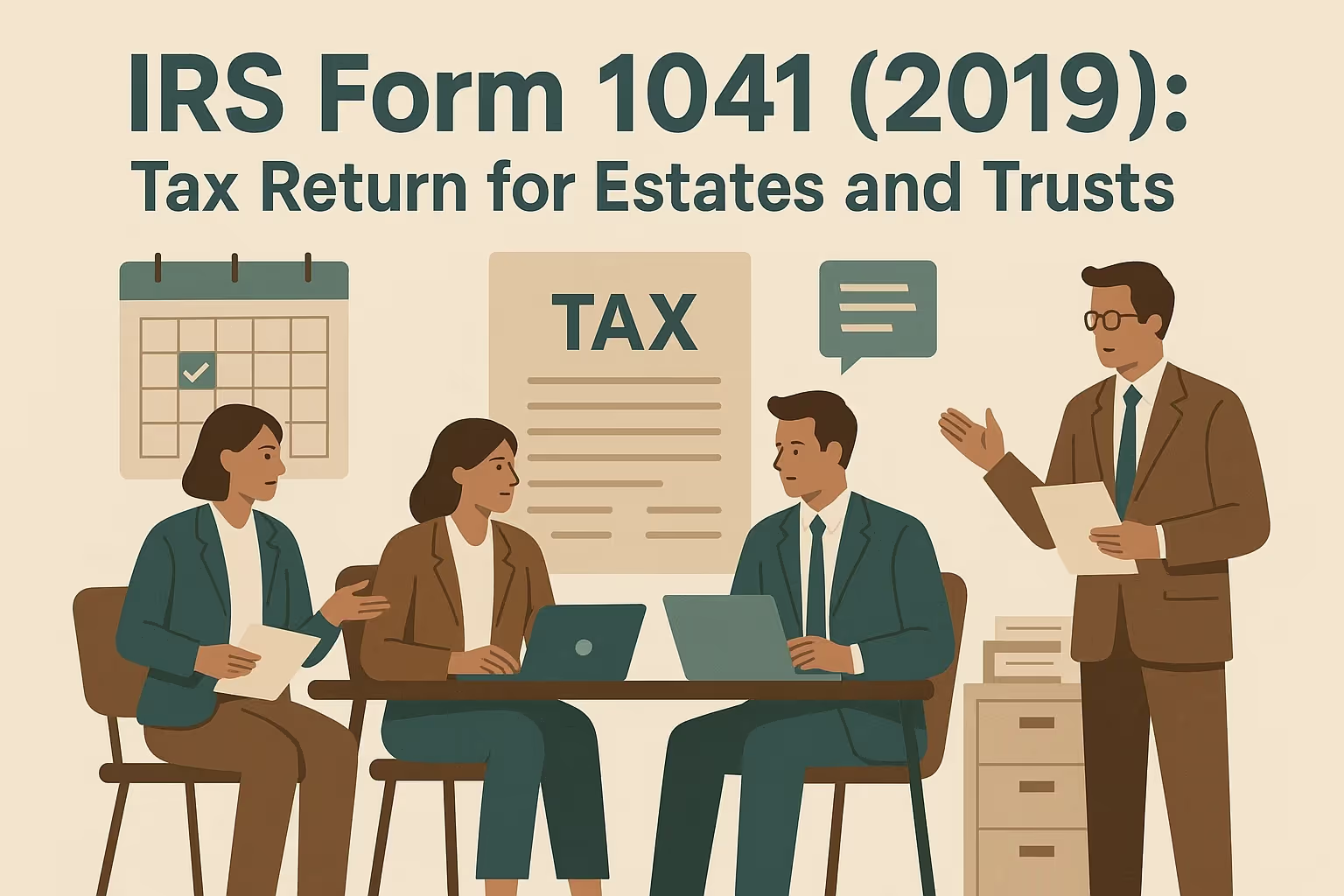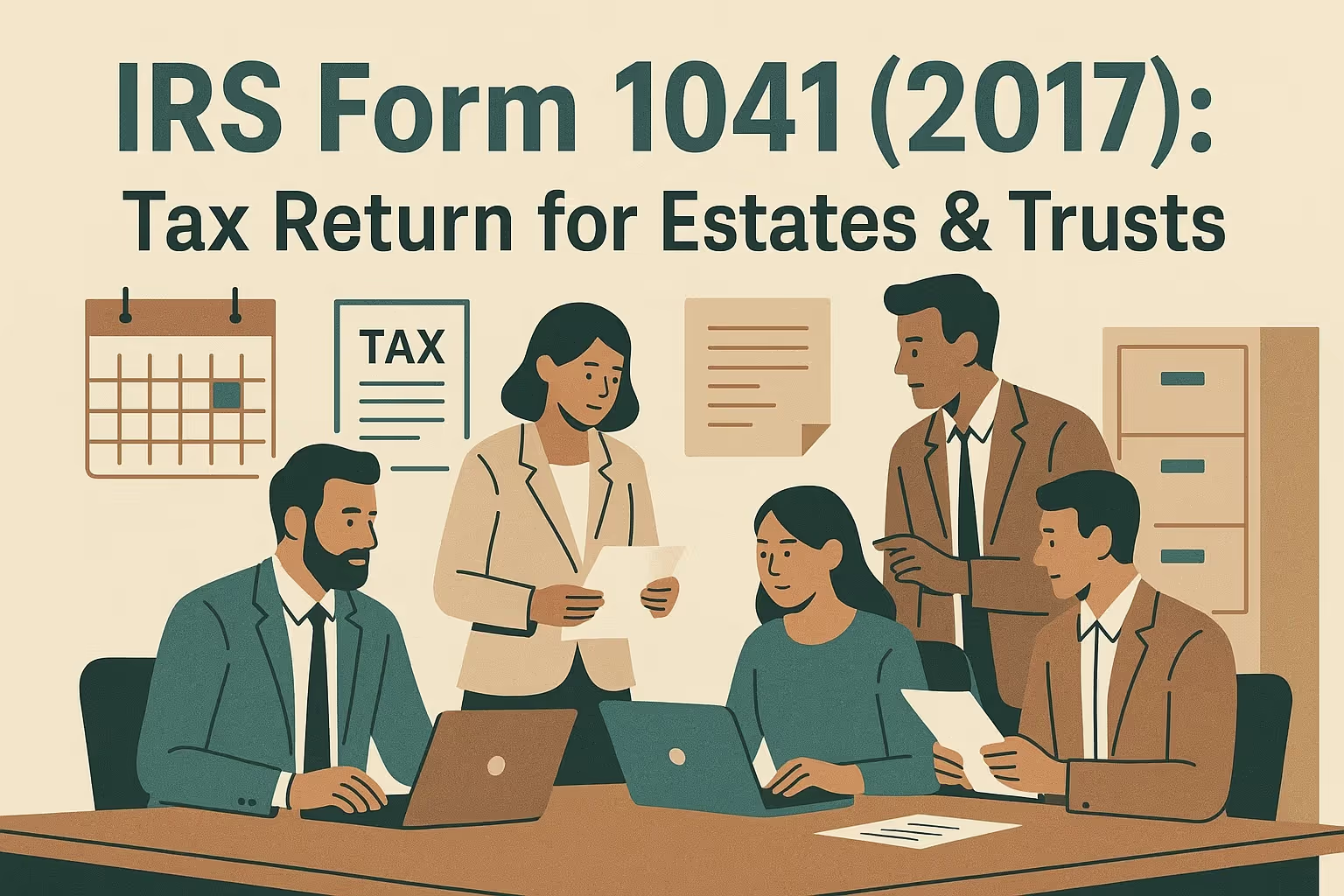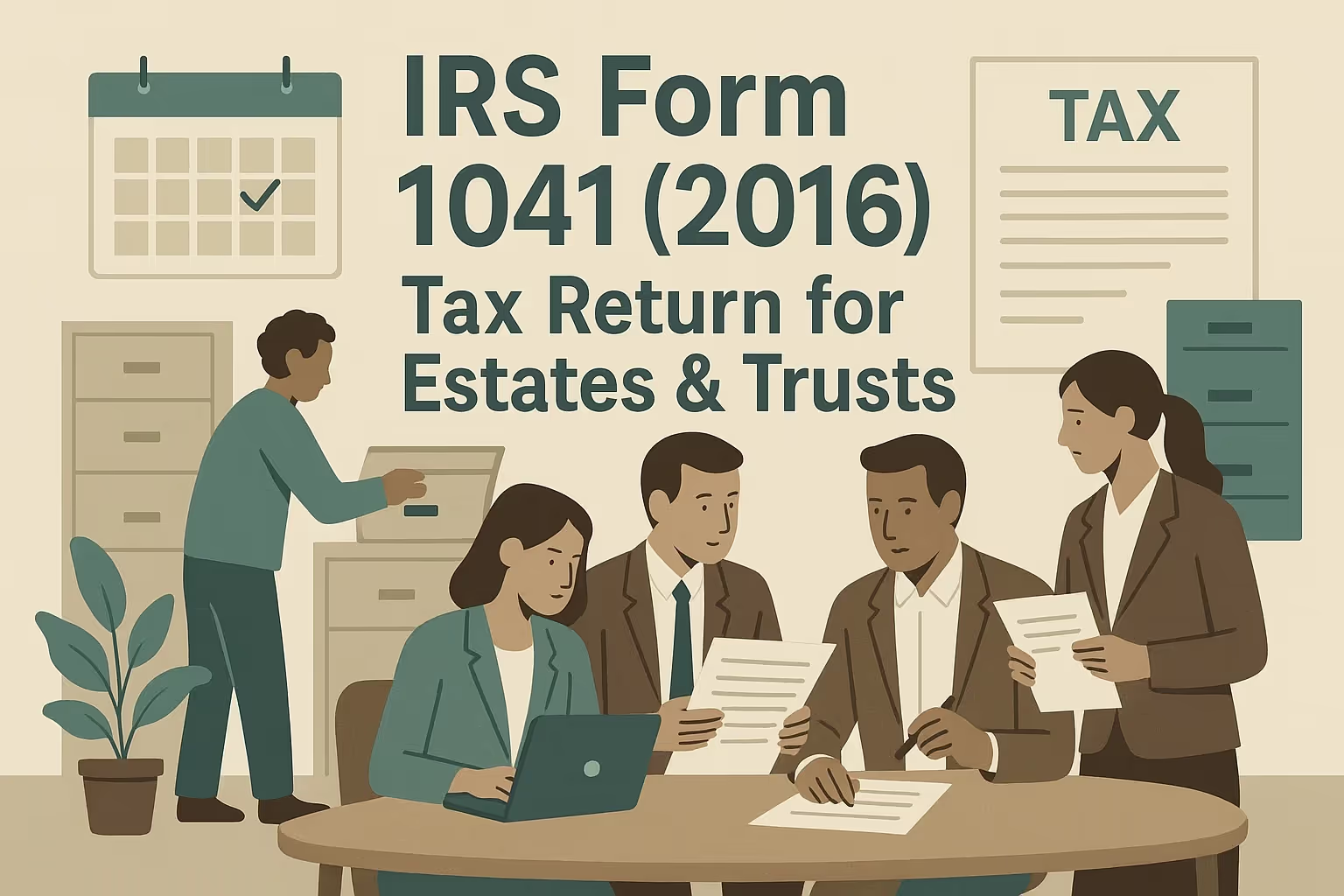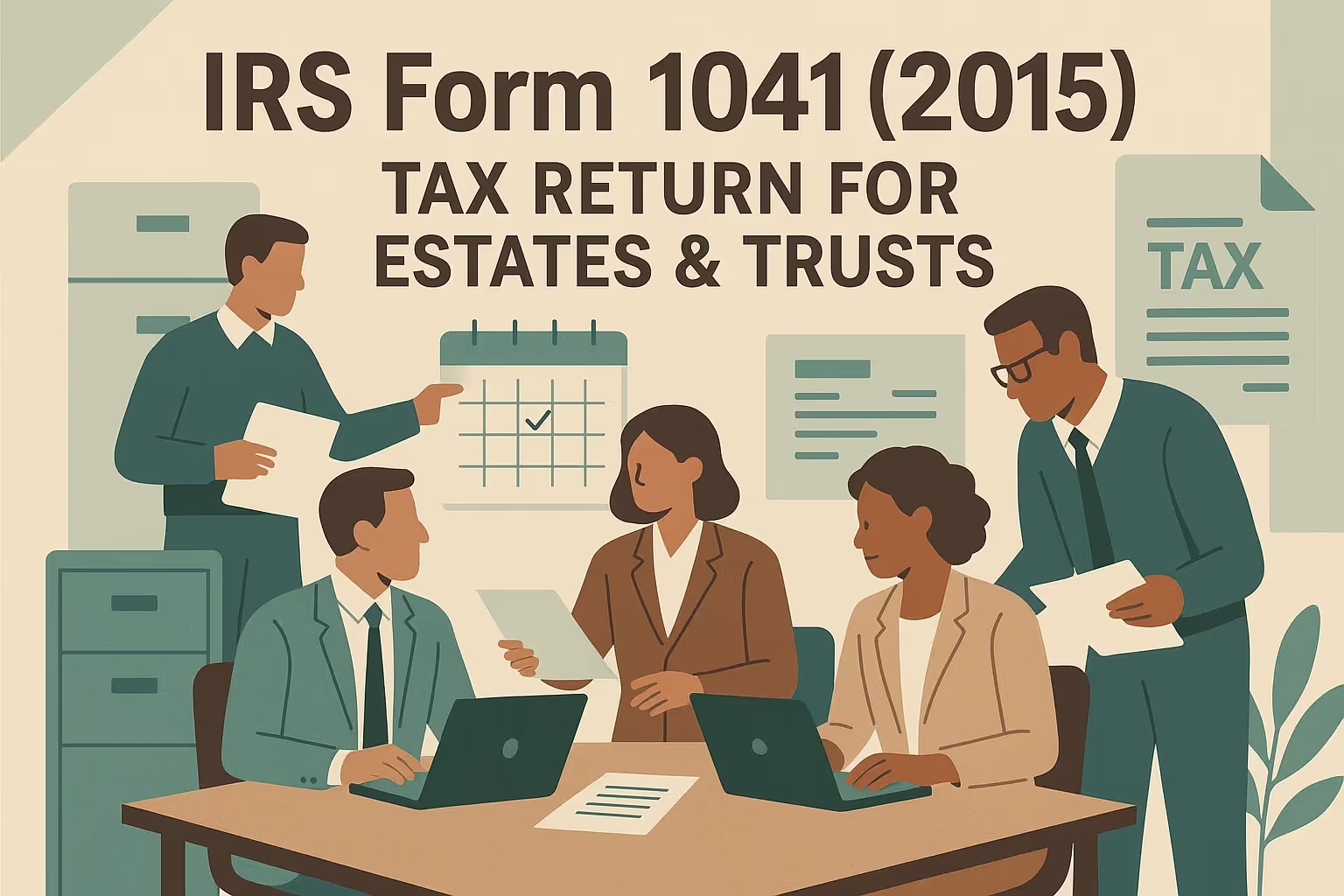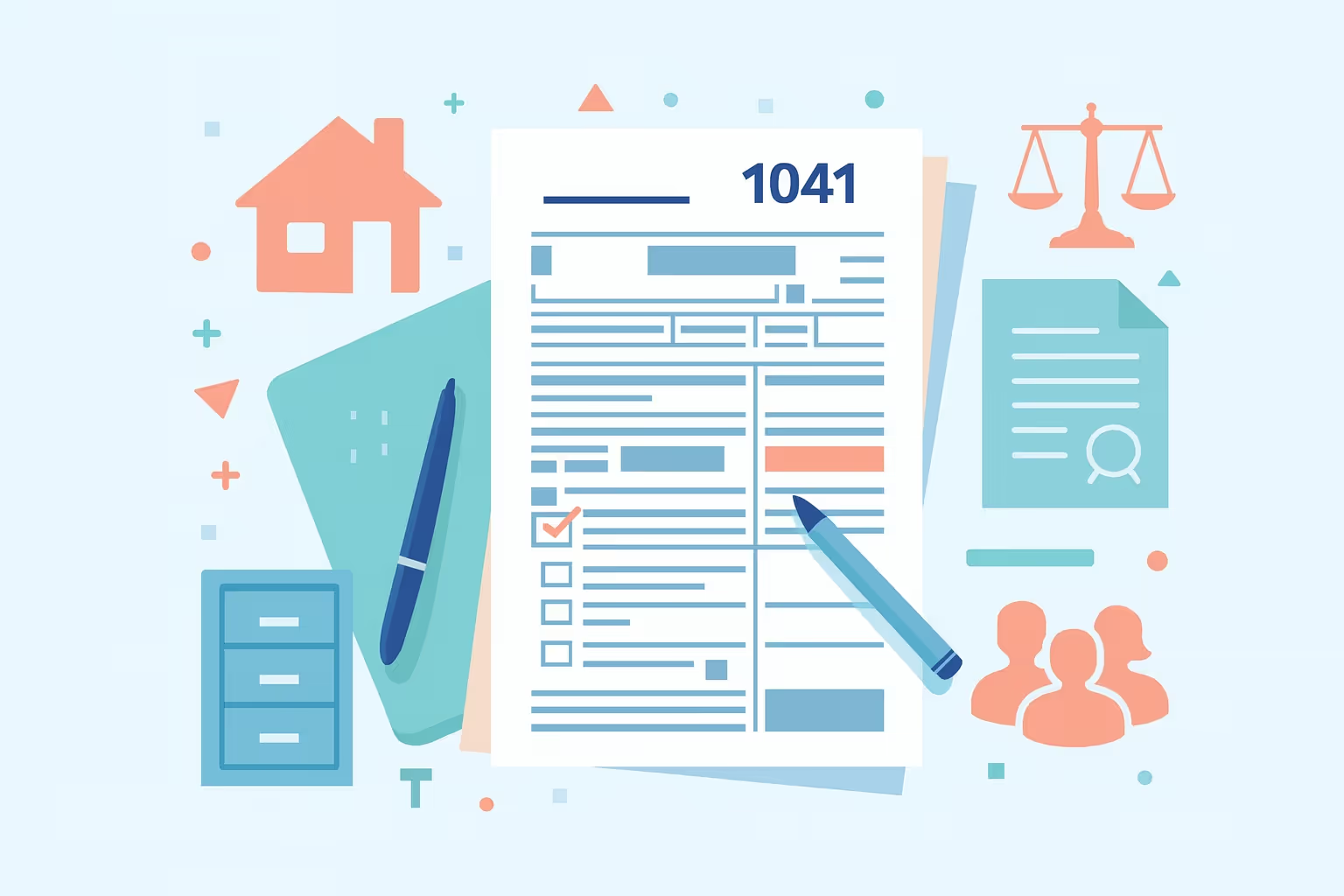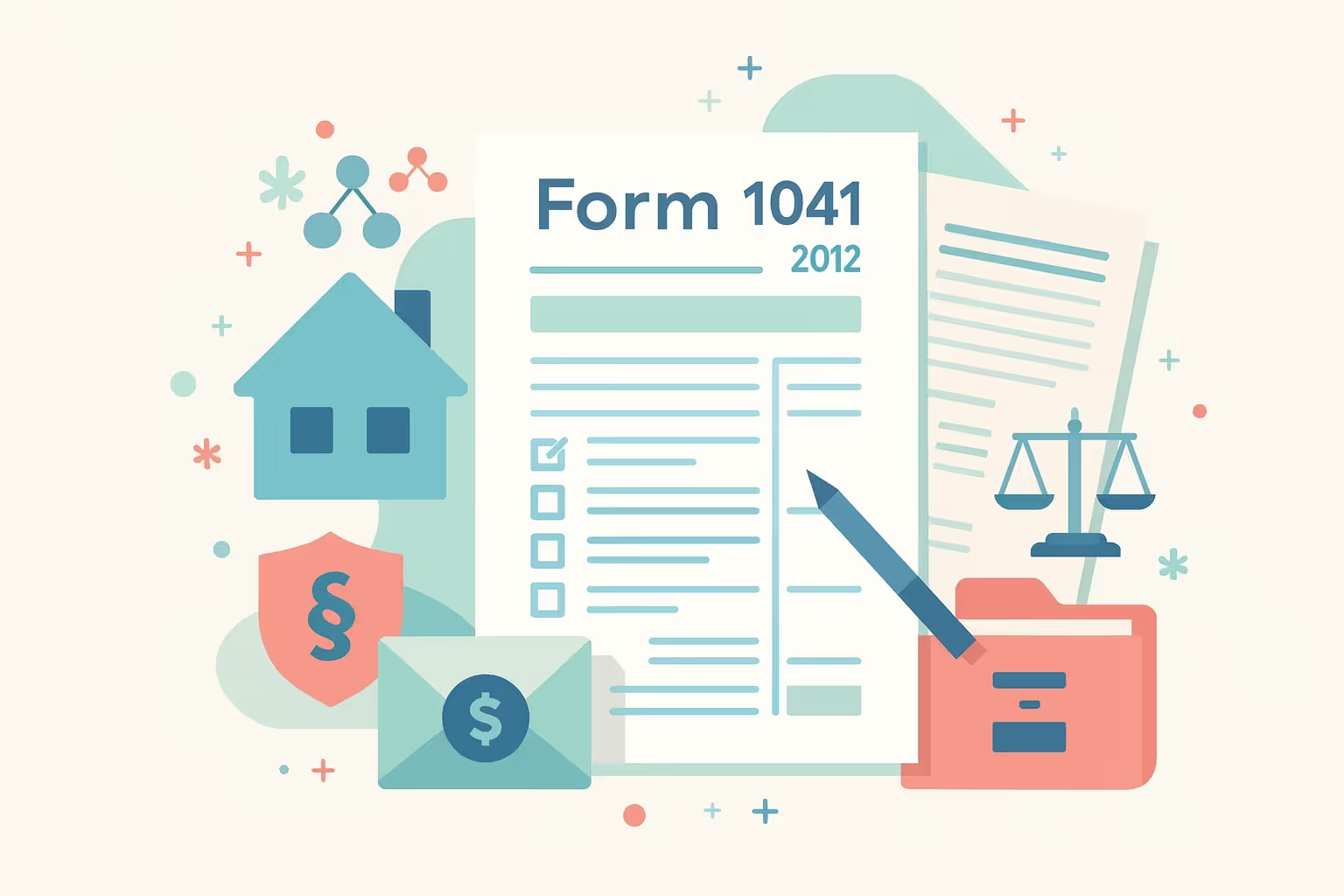IRS Form 1041 (2025): Tax Return for Estates and Trusts

What IRS Form 1041 (2025) Is For
IRS Form 1041 (2025) is the fiduciary income tax return used by estates and trusts to report income, deductions, credits, and tax liability. The Internal Revenue Service (IRS) requires this form to capture income generated after a decedent’s death, ensuring proper taxation under the Internal Revenue Code.
An estate or trust must file if its gross income is $600 or more, if it has taxable income, or if any beneficiary is a nonresident alien. The personal representative, trustee, or executor is responsible for completing and submitting the tax return using the estate or trust’s employer identification number (EIN). Filing helps report income earned, deductions, and income distribution deductions that determine the final tax due for the tax year.
When to File and Amend Form 1041
Fiduciaries must file Form 1041 by April 15, 2026, for calendar year estates and trusts. Fiscal year filers must submit the return by the 15th day of the fourth month after the close of their tax year. An extension of time can be requested using Form 7004 if more preparation time is needed.
A late or amended return may be required if errors are found in income, deductions, or beneficiary reporting. Amended returns must be filed within three years of the original return or two years from the date of payment, whichever is later.
Key 2025 Filing Rules
- Capital Gains Brackets: The 2025 tax rate for estates and trusts is 0% up to $3,250, 15% between $3,250 and $15,900, and 20% above $15,900.
- Exemptions: Estates may claim $600, simple trusts $300, complex trusts $300, and qualified disability trusts $4,850.
- Form Usage: If the 2025 version of Form 1041 is not available, the 2024 form may be used, provided it is clearly marked for the 2025 tax year.
- K-1 Distribution: Beneficiaries must receive Schedule K-1 by the filing due date, including extensions.
For more resources on filing or understanding prior-year IRS forms, visit our guide on Form 1041 – Income Tax Return for Estates & Trusts.
Step By Step: How to Prepare and File Form 1041
- Gather Records: Collect IRS transcripts, income statements, tax forms, and records of wages paid, interest, and property sales.
- Prepare the Form: Use the official IRS Form 1041 following Internal Revenue Code guidance on estate and trust taxation.
- Attach Schedules: Include Schedule A for charitable deductions, Schedule B for income distribution deductions, and other schedules for capital assets and accumulation distributions.
- File the Return: Fiduciaries may e-file or mail paper copies, accompanied by payment by check or money order. E-filing speeds up processing and reduces errors.
- Retain Documents: Keep copies of the original return, supporting statements, and correspondence for at least three years following the tax year.
Learn more about federal tax filing through our IRS Form Help Center.
Common Filing Mistakes and How To Avoid Them
- Incorrect EIN: Always use the employer identification number of the estate or trust, not the decedent’s Social Security number.
- Missed Form 1041-T Deadline: File by March 6, 2026, to allocate estimated tax payments to beneficiaries.
- Incorrect Withholding: Report only backup withholding to beneficiaries; do not transfer regular withholding.
- Pre-Death Payments Error: Do not include estimated taxes paid before the decedent’s death on Form 1041. Those should be included on the final Form 1040.
- Final Return Errors: Clearly mark the final return box and transfer any unused deductions or credits to beneficiaries.
- Poor Documentation: Maintain clear records of income allocation, deductions, and transactions that affect trust income and property.
Learn more about how to avoid business tax problems in our guide on How to File and Avoid Penalties.
After You File
The IRS typically processes e-filed estate tax returns within four to six weeks and paper returns in six to eight weeks. Late filing penalties are 5% per month (up to 25%), while late payment penalties are 1% per month. Interest on unpaid tax accrues daily.
If payment in full is not possible, fiduciaries can apply for an installment plan using Form 9465 or the IRS online payment system. Payment can be made by money order, check, or electronic transfer. Filing on time helps avoid the more severe failure-to-file penalty.
FAQs
Can I file an amended Form 1041 electronically?
Yes, the Internal Revenue Service allows amended fiduciary returns to be e-filed, including PDF attachments explaining corrections. This process is faster and more accurate than mailing paper forms.
What is the penalty for late filing?
The late filing penalty is 5% of the unpaid tax per month or part of a month, up to a maximum of 25%. If the return is more than 60 days late, the minimum penalty is $510 or 100% of the tax due, whichever is less.
How long do I have to file a refund claim?
Refund claims must be filed within three years of the original due date or two years from the payment date. This rule applies to both income tax and estate tax refunds.
Can fiscal year estates use different due dates?
Yes, estates and trusts that operate on a fiscal year basis must file by the 15th day of the fourth month following the end of their fiscal year. This timeline aligns with the estate administration needs and allows for flexibility in handling complex cases.
Do I also need to amend my state returns?
In most cases, yes, you should. States that impose fiduciary income tax often require amended returns when the federal Form 1041 is amended. Always confirm deadlines and filing procedures with your state tax agency to ensure accuracy.
What if I need more time to make a payment?
You can request an installment agreement using Form 9465 or apply for an extension of time to pay. Even if full payment is not possible, file the tax return on time to avoid additional penalties.
How do I correct a beneficiary’s Schedule K-1?
To correct beneficiary information, file an amended return and issue updated K-1 forms marked “Amended.” Beneficiaries may also need to amend their individual tax returns.
For more resources on filing or understanding prior-year IRS forms, visit our Forms Hub.






